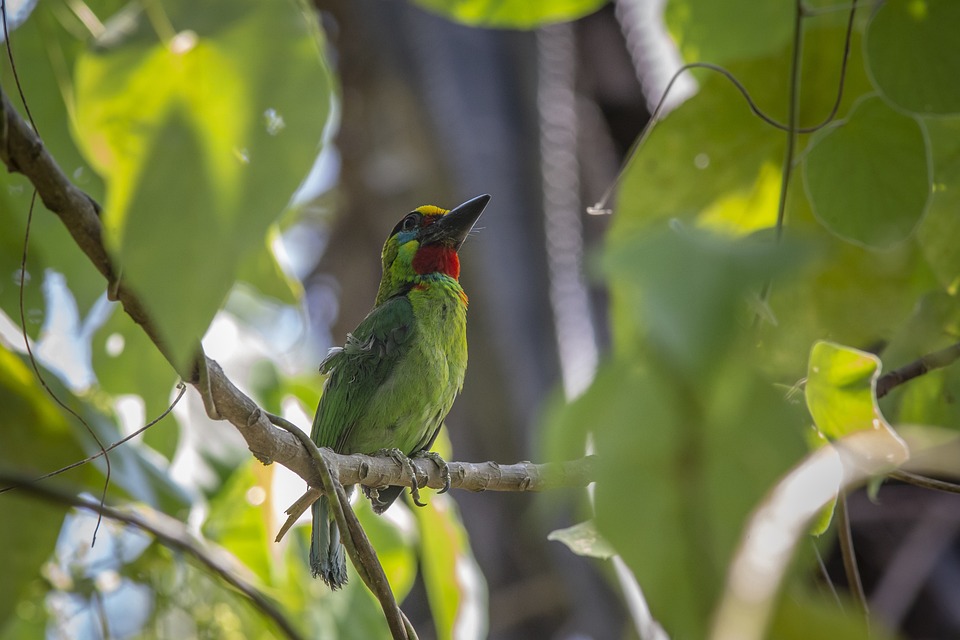Parrots are highly social creatures that thrive on interaction and companionship. Just like humans, they require socialization to lead fulfilling lives. Encouraging socialization with family members of different ages is crucial for your parrot’s mental and emotional well-being. In this article, we will explore effective strategies to foster social connections between your parrot and family members of all ages.
Creating a Safe and Stimulating Environment
Before diving into specific techniques, it’s important to ensure your parrot’s environment is suitable for social interaction. Creating a safe and stimulating setting will make it easier for family members of different ages to engage with your parrot.
1. Parrot-Proofing Your Home: Remove any hazardous items or toxic plants that could pose a danger to your parrot. Secure electrical cords and ensure all windows and doors are safely closed.
2. Providing Ample Enrichment: Parrots need mental stimulation to stay happy and engaged. Offer a variety of toys, puzzles, and foraging opportunities in your parrot’s living space to keep them entertained.
3. Establishing a Comfortable Space: Dedicate an area in your home where family members can comfortably spend time with your parrot. Ensure there are perches, play stands, and interactive toys to encourage interaction.
Involving Young Children in Parrot Socialization
Introducing parrots to young children requires careful supervision and education. With the right approach, young children can develop a deep bond with their feathered companion.
1. Teaching Proper Handling: Teach young children how to gently interact with your parrot. Demonstrate how to offer treats, stroke the feathers, and avoid sudden movements. Always supervise interactions to prevent accidental harm.
2. Engaging in Interactive Play: Encourage young children to engage in interactive play sessions with your parrot. This can include games like “peek-a-boo,” mimicking sounds, or playing with safe toys together.
3. Supervising Time Together: Young children should never be left unsupervised with a parrot. Even the most well-trained parrots may display unpredictable behavior, and it’s essential to ensure both the child and the parrot’s safety.
Including Teenagers in Parrot Socialization
Teenagers can play a vital role in socializing with parrots due to their ability to understand and follow instructions. Here are some strategies to involve teenagers in parrot socialization:
1. Teaching Training Techniques: Encourage teenagers to participate in training sessions with your parrot. Teach them basic training techniques, such as teaching the parrot to step up onto a hand or perform simple tricks. This interaction fosters trust and strengthens the bond between the teenager and the parrot.
2. Allowing for Independent Time: Teenagers can spend quality time with your parrot individually. This one-on-one interaction promotes a sense of companionship and helps the parrot become comfortable with different family members.
3. Promoting Responsibility: Assigning specific parrot-related responsibilities to teenagers, such as feeding, cleaning, or maintaining the parrot’s living space, can help them develop a sense of accountability and empathy towards the parrot.
Encouraging Adults and Seniors to Socialize with Parrots
Adults and seniors can greatly contribute to a parrot’s socialization, providing them with stability and a calming presence. Here’s how to encourage their involvement:
1. Establishing a Routine: Parrots thrive on routine. Encourage adults and seniors to spend consistent, dedicated time with the parrot each day. This regularity helps the parrot feel secure and builds a strong bond.
2. Conversation and Vocalization: Parrots are known for their ability to mimic human speech. Encourage adults and seniors to engage in conversations with the parrot, allowing them to develop their vocalization skills. This interaction strengthens the parrot’s socialization and mental stimulation.
3. Sharing Mealtimes: Inviting the parrot to join family members during mealtime can be an excellent bonding experience. While ensuring the parrot’s dietary needs are met, encourage adults and seniors to share small, safe portions of fresh fruits or vegetables with the parrot.
Frequently Asked Questions (FAQs)
1. Can all parrot species socialize equally well with family members of different ages?
– While all parrot species can potentially socialize with family members, some species may be naturally more inclined to bond with specific individuals or age groups. Research the characteristics and socialization preferences of your parrot’s species to better understand their tendencies.
2. What if my parrot seems fearful or aggressive towards certain family members?
– If your parrot displays fear or aggression towards specific individuals, it’s crucial to assess the underlying cause. Seek guidance from an avian behaviorist to help identify and address any potential triggers or issues.
3. What if my parrot prefers the company of one family member over others?
– Parrots may naturally form stronger bonds with specific family members. While this is normal, it’s important to provide opportunities for other family members to engage with the parrot. Encourage shared responsibilities and interactive play sessions to foster a sense of inclusion.
Remember, socializing your parrot with family members of different ages requires patience, consistency, and understanding. By following these guidelines and adapting them to your parrot’s unique needs, you can create a harmonious and socially enriched environment for everyone involved.









